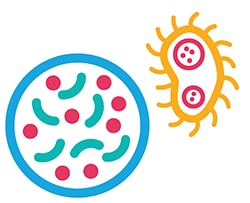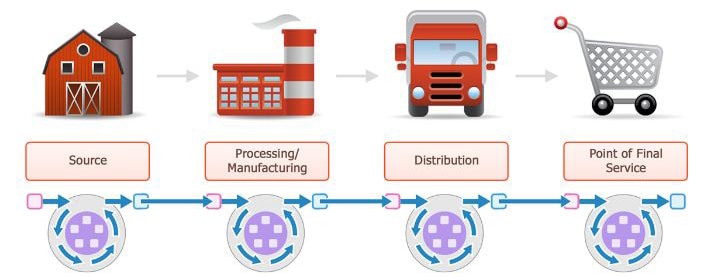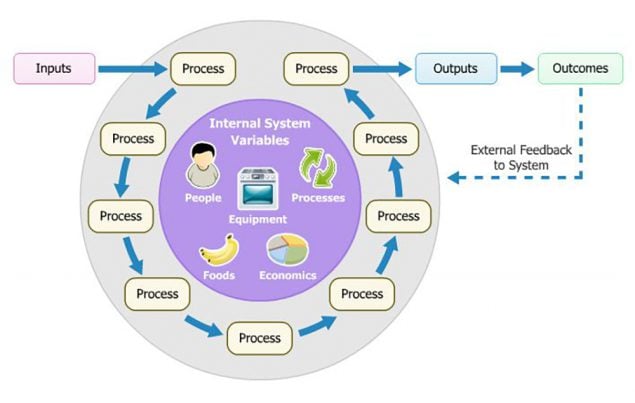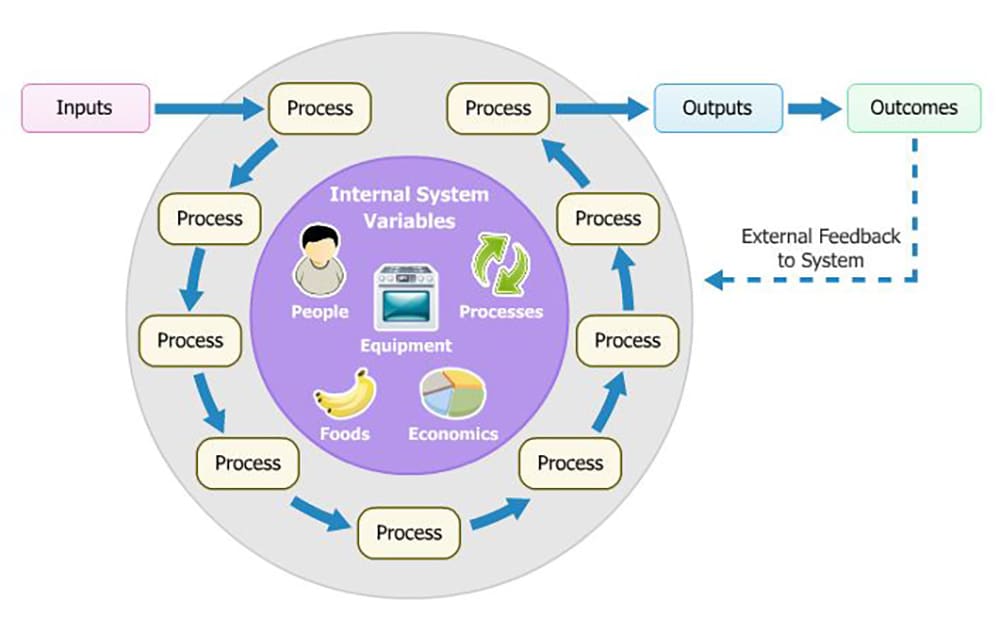Environmental Assessment Definitions
Review definitions of key terms used in environmental assessments of foodborne outbreak investigations reported in NEARS.
Contributing Factors – What happened to cause an outbreak; how an outbreak happens. Learn more about contributing factors.

Environment – Everything external to the host, including food, water, other people, and the built environment. For example,
- food, such as acidity, pH, and other factors that can affect survival and growth of pathogens;
- water, such as contaminated ice;
- other people, such as a worker who handles food while sick; and
- built environments, such as how a restaurant kitchen is designed.

Environmental Antecedents – Why contributing factors occur (sometimes referred to as root causes of outbreaks).
For example, a norovirus outbreak might have a primary contributing factor of a sick food worker. Environmental antecedents to this outbreak would focus on why the worker was working while sick. Those reasons could include the following:
- The worker would not get paid if he didn’t work
- His manager made him work because she could not find anyone to work his shift instead
Farm-to-Fork Continuum – How food gets from its source to the point of final service.
- Source: Where the food item originates
- Processing/manufacturing: All the steps that prepare a food item for distribution
- Distribution: Storage and warehousing, repacking, reprocessing, and transport to the next point in the continuum
- Point of final service: Every place the food is purchased and/or eaten, such as delis, cafeterias, restaurants, and grocery stores
Foodborne Illness Outbreak – When two or more people get sick after eating the same food.
Food Safety System – Every step along the farm-to-fork continuum. Each step in the continuum is also its own food safety system. All food safety systems consist of the same components:
- Inputs: items that enter the system (for example, ingredients received by restaurant kitchen)
- Processes: what inputs are subjected to (for example, serving, assembling, holding food)
- Internal system variables: factors that exert positive, negative, and neutral effects on all other aspects of the system
- Outputs: immediate results of the system
- Outcomes: what happens because of the outputs
- Feedback: to that system based on the outcomes
Interventions (science-based) – Actions taken to stop the outbreak and prevent future ones; recommendations based on data from environmental assessments and other components of the outbreak investigation. For example, immediate interventions might include the following:
- destroying food or taking steps to stop its distribution,
- excluding food workers who are sick, or
- closing the facility.
Longer term interventions might include the following:
- developing and implementing a Hazard Analysis Critical Control Point (HACCP) plan or
- updating and implementing policies for identifying and managing food workers who are sick with symptoms such as diarrhea, vomiting, and/or fever.
System theory – Focusing on the complete system and the underlying interactions of all the forces that make up that system. Learn more about system theory in food safety.
Definitions adapted from Selman CA, Guzewich JJ. Public health measures: environmental assessment in outbreak investigations. pdf icon[PDF – 732 KB] In: Motariemi Y, editor. Encyclopedia of food safety. 1st ed. Waltham, MA: Academic Press; 2014. p. 98-106.
Guide to Confirming an Etiology in Foodborne Disease Outbreak


